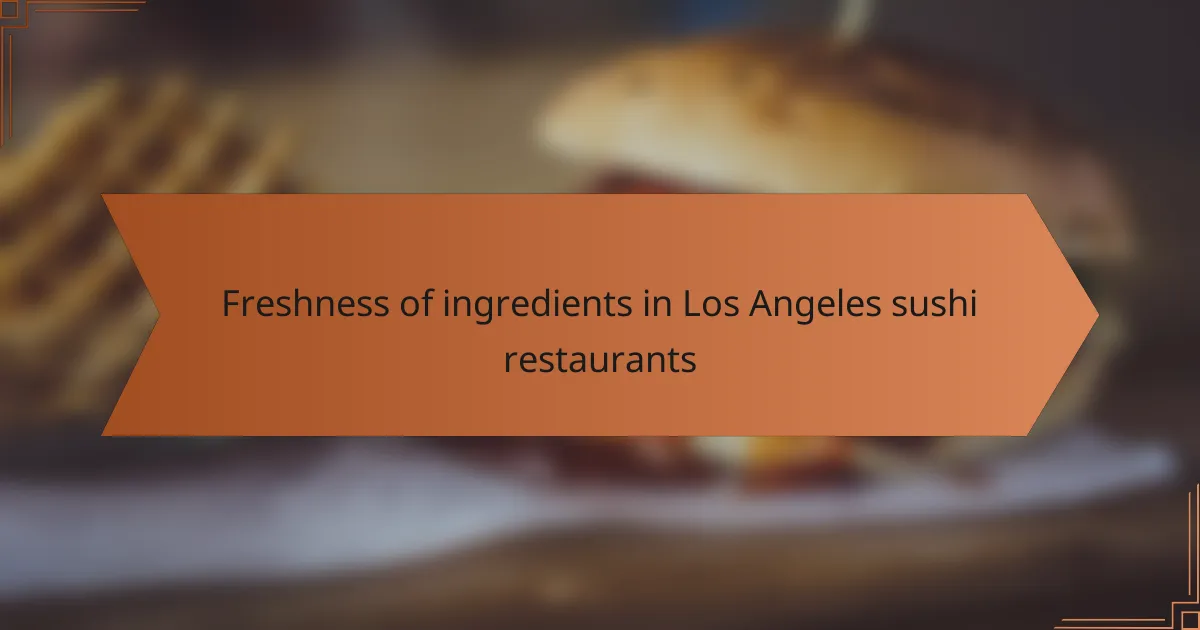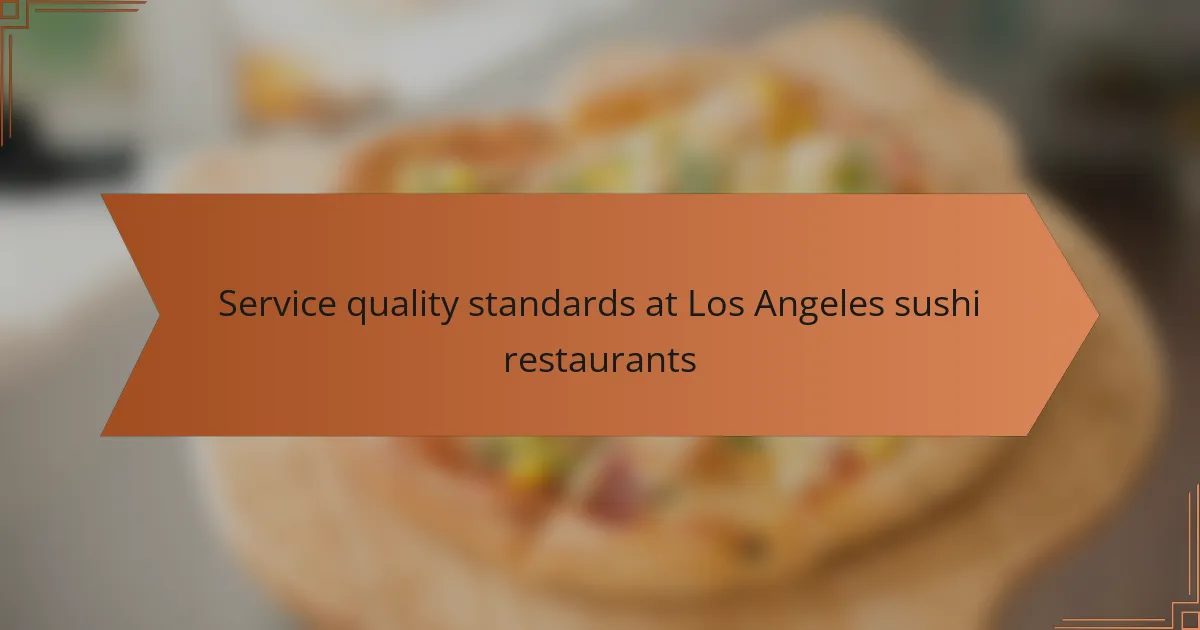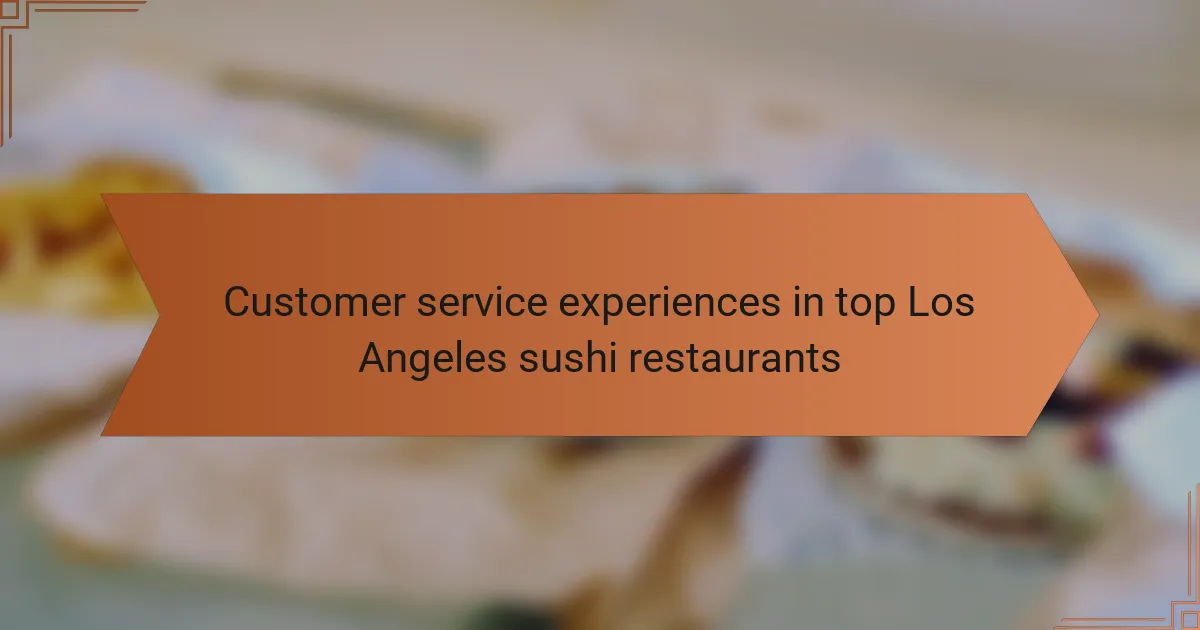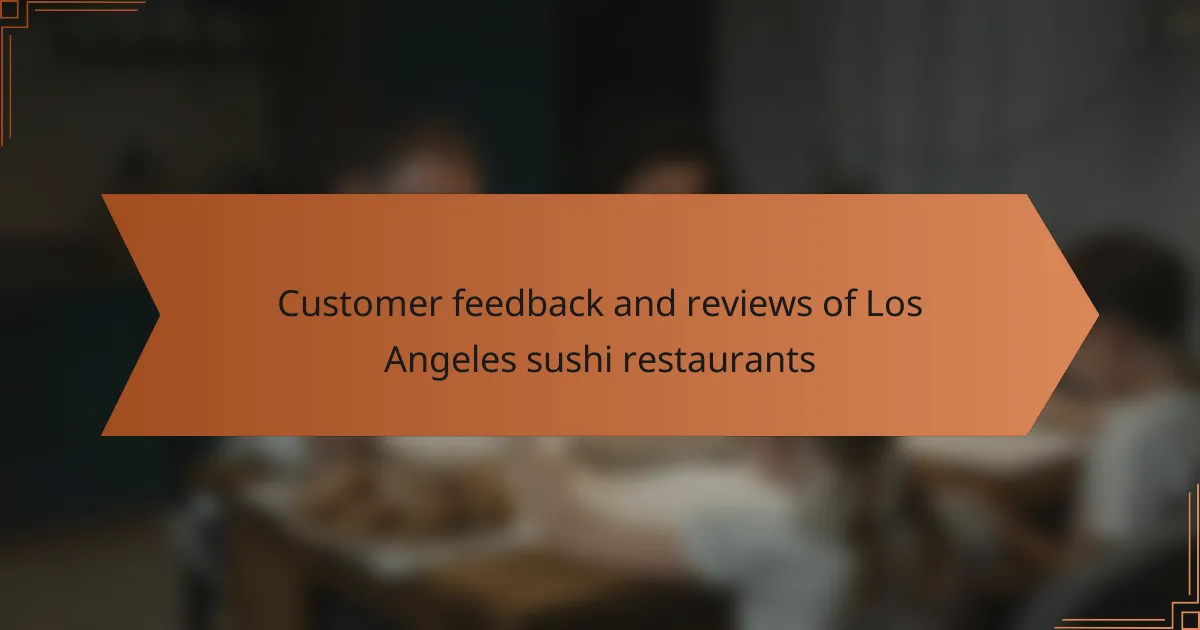Sushi restaurants in Los Angeles are required to adhere to the California Retail Food Code, which establishes stringent food safety practices to mitigate the risk of foodborne illnesses. Key regulations include the freezing of fish to eliminate parasites, maintaining proper refrigeration, and ensuring that staff undergo food safety training. Common health risks associated with sushi consumption include foodborne illnesses from bacteria like Salmonella, parasitic infections such as Anisakis, and mercury exposure from certain fish. Best practices for sushi restaurants encompass proper food handling, regular cleaning, and compliance with health inspections to ensure public safety and maintain high hygiene standards.
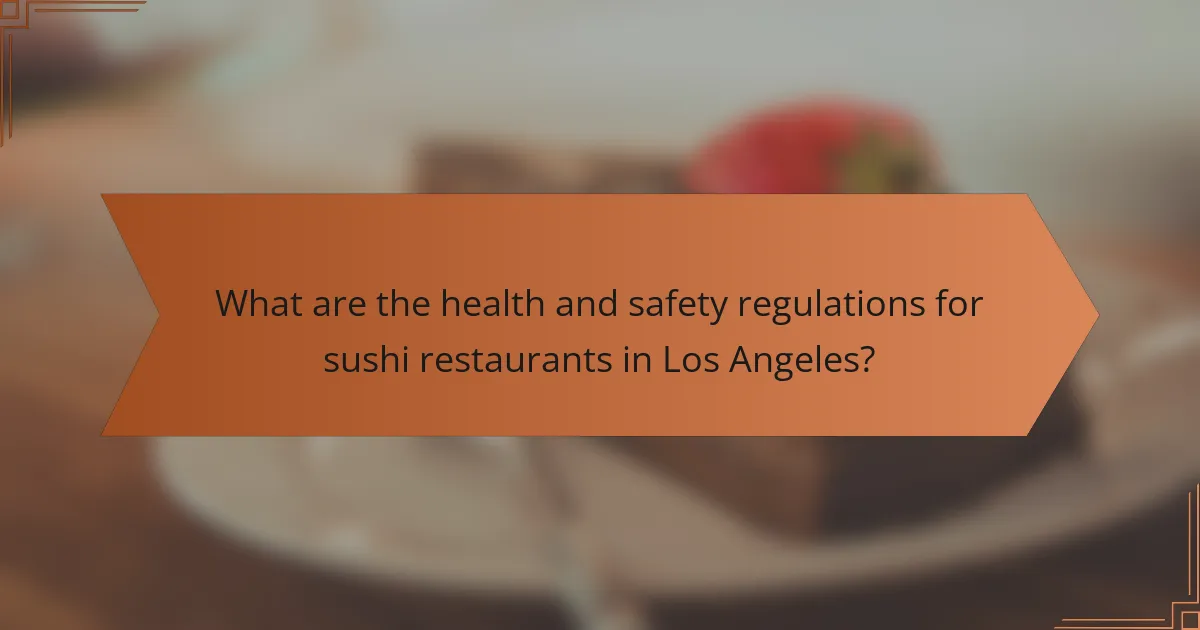
What are the health and safety regulations for sushi restaurants in Los Angeles?
Sushi restaurants in Los Angeles must comply with the California Retail Food Code. This code outlines food safety practices to prevent foodborne illnesses. Sushi must be prepared using fish that is frozen at specific temperatures to kill parasites. Restaurants must maintain proper refrigeration to keep fish at safe temperatures. Regular inspections by the Los Angeles County Department of Public Health ensure compliance. Violations can lead to fines or temporary closures. Staff must also undergo food safety training. These regulations are essential for public health and safety.
How are these regulations enforced in the city?
Health and safety regulations in Los Angeles sushi restaurants are enforced through regular inspections by the Los Angeles County Department of Public Health. Inspectors assess compliance with food safety standards, sanitation practices, and employee hygiene. Violations can result in fines, mandatory training, or temporary closure of the establishment. The city also encourages public reporting of health violations through a hotline. This system helps maintain accountability among restaurant operators. Data from the Los Angeles County Department of Public Health indicates that compliance rates have improved due to these enforcement measures.
What agencies are responsible for monitoring compliance?
The agencies responsible for monitoring compliance in health and safety regulations in Los Angeles sushi restaurants include the Los Angeles County Department of Public Health and the California Department of Public Health. The Los Angeles County Department of Public Health conducts inspections to ensure food safety standards are met. They enforce regulations related to food handling, sanitation, and employee hygiene. The California Department of Public Health oversees statewide health regulations and provides guidelines for food safety. These agencies work together to ensure compliance with health and safety laws.
What are the consequences of non-compliance?
Non-compliance with health and safety regulations in Los Angeles sushi restaurants can lead to severe penalties. These penalties may include fines imposed by local health authorities. Restaurants may also face temporary or permanent closure due to violations. Non-compliance can result in loss of business reputation and customer trust. Health risks to consumers can increase, leading to potential lawsuits. In some cases, repeated violations may lead to criminal charges against restaurant owners. The California Department of Public Health reports that foodborne illnesses can arise from improper food handling. Compliance ensures food safety and protects both consumers and businesses.
What specific health codes apply to sushi restaurants?
Sushi restaurants in Los Angeles must comply with specific health codes outlined by the California Retail Food Code. These codes include guidelines for food safety, hygiene, and proper food handling. Sushi must be prepared using fish that is frozen to kill parasites, as per health regulations. Additionally, restaurants must maintain proper refrigeration temperatures for raw fish to prevent bacterial growth. Staff must adhere to personal hygiene standards, including handwashing protocols. Regular inspections by the Los Angeles County Department of Public Health ensure compliance with these health codes. Violations can lead to fines or closure until issues are resolved.
What guidelines govern food handling and preparation?
The guidelines that govern food handling and preparation include the Food Code established by the U.S. Food and Drug Administration (FDA). This code provides a framework for safe food handling practices. It emphasizes proper hygiene, including handwashing and the use of gloves. Temperature control is also critical; food must be kept at safe temperatures to prevent bacterial growth. Cross-contamination must be avoided by using separate utensils and cutting boards for raw and cooked foods. Regular training and certification for food handlers are mandated to ensure compliance with these standards. Local health departments, such as those in Los Angeles, enforce these guidelines to protect public health.
How do regulations address seafood sourcing and storage?
Regulations address seafood sourcing and storage by enforcing strict guidelines to ensure safety and quality. These regulations require seafood to be sourced from approved suppliers. Approved suppliers must meet specific health standards set by agencies such as the FDA. Additionally, regulations mandate proper storage temperatures to prevent spoilage and contamination. Seafood must be stored at temperatures below 41°F to ensure freshness. Regular inspections are conducted to verify compliance with these storage requirements. Violations can lead to penalties, including fines or closure of establishments. These measures protect public health and maintain the integrity of seafood served in restaurants.
What training is required for sushi restaurant staff?
Sushi restaurant staff require training in food safety and hygiene practices. This training ensures compliance with local health regulations. Staff must understand proper food handling techniques to prevent contamination. Training includes knowledge of sushi preparation, fish storage, and temperature control. Employees must also learn about allergen management and cross-contamination prevention. Certification programs, such as ServSafe, are commonly utilized for this training. In Los Angeles, adherence to the California Retail Food Code is mandatory. Regular updates and refresher courses are recommended to maintain safety standards.
What certifications must employees obtain?
Employees in Los Angeles sushi restaurants must obtain food handler certifications. This certification ensures that employees understand safe food handling practices. It typically covers topics such as food safety, hygiene, and sanitation. The California Department of Public Health mandates this certification for all food service workers. Additionally, sushi chefs may require specialized training in handling raw fish. This training helps prevent foodborne illnesses. Compliance with these certification requirements is crucial for restaurant operations. Failure to obtain necessary certifications can lead to penalties or closure.
How often must staff undergo training updates?
Staff must undergo training updates annually. This frequency aligns with California’s health and safety regulations. Regular training ensures compliance with food safety standards. It helps maintain high hygiene practices in sushi restaurants. Additionally, annual updates keep staff informed on new regulations. This practice ultimately protects public health. Regular training minimizes risks associated with foodborne illnesses. Compliance with these updates is critical for restaurant operations.
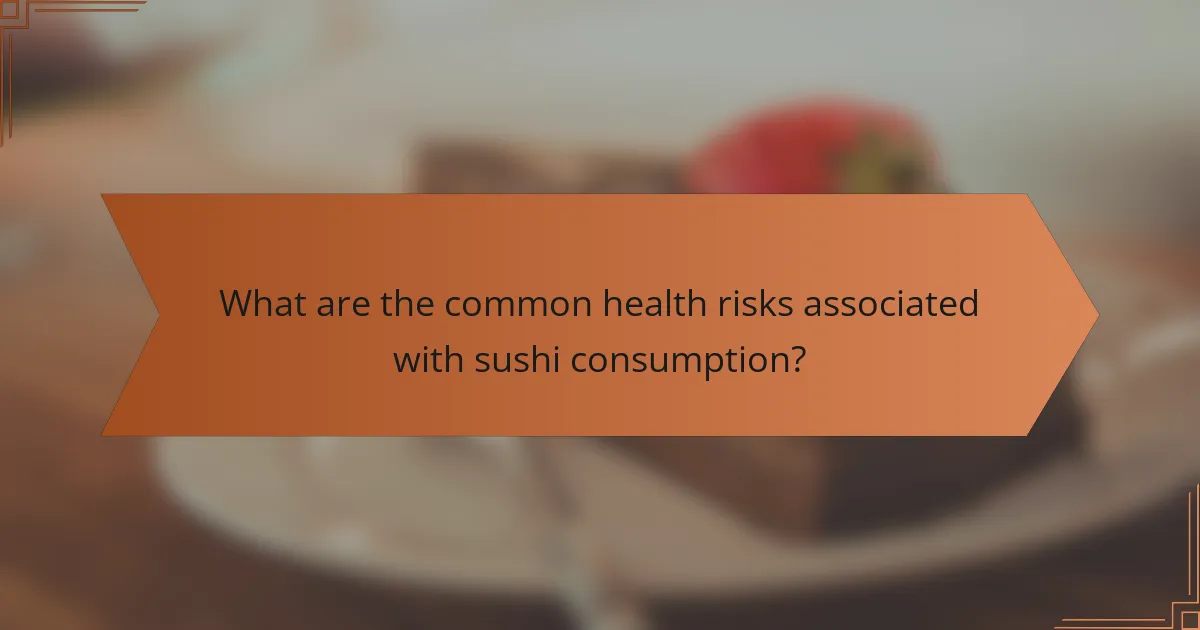
What are the common health risks associated with sushi consumption?
Common health risks associated with sushi consumption include foodborne illnesses, parasitic infections, and mercury exposure. Foodborne illnesses can arise from raw fish contaminated with bacteria such as Salmonella or Vibrio. These pathogens can lead to symptoms like nausea, vomiting, and diarrhea. Parasitic infections, such as those caused by Anisakis, can occur when consuming raw or undercooked fish. This parasite can cause severe abdominal pain and allergic reactions. Additionally, some fish used in sushi, like tuna, may contain high levels of mercury. Consuming mercury can lead to neurological issues and other health problems. The FDA advises limiting intake of high-mercury fish, especially for vulnerable populations.
How do health regulations mitigate these risks?
Health regulations mitigate risks in Los Angeles sushi restaurants by enforcing strict food safety standards. These regulations require proper handling, storage, and preparation of raw fish. Compliance with temperature controls prevents bacterial growth, reducing foodborne illnesses. Regular inspections by health authorities ensure adherence to these standards. Violations can lead to fines or closure, incentivizing compliance. Training programs for staff educate on safe food practices. Public health campaigns raise awareness about potential risks. Together, these measures create a safer dining environment for consumers.
What measures are taken to prevent foodborne illnesses?
Foodborne illnesses are prevented through strict health and safety regulations in Los Angeles sushi restaurants. These regulations include proper food handling practices, such as washing hands frequently and using gloves. Sushi chefs are trained to maintain cleanliness in food preparation areas. Additionally, seafood must be sourced from approved suppliers to ensure quality and safety. Regular inspections by health authorities help enforce these standards. Temperature control is crucial; sushi must be stored at safe temperatures to inhibit bacterial growth. The use of proper storage techniques further reduces risks. These measures collectively ensure the safety of sushi served in Los Angeles restaurants.
How do regulations ensure seafood quality and safety?
Regulations ensure seafood quality and safety through strict guidelines and monitoring processes. These regulations set standards for sourcing, handling, and storing seafood. They require regular inspections of seafood establishments to ensure compliance. Specific criteria include temperature control, hygiene practices, and traceability of seafood sources. For instance, the FDA mandates that seafood must be obtained from approved suppliers. Additionally, regulations limit the use of harmful additives and require proper labeling. Compliance with these regulations reduces the risk of foodborne illnesses. Studies show that adherence to safety regulations significantly lowers contamination rates in seafood.
What role does customer awareness play in health and safety?
Customer awareness plays a crucial role in health and safety within Los Angeles sushi restaurants. Informed customers can identify safe food handling practices. They can also recognize proper hygiene standards among staff. This awareness encourages restaurants to maintain high safety standards. Research indicates that consumer knowledge directly impacts food safety compliance. A study by the Food Safety Authority found that educated customers are more likely to report unsafe practices. Additionally, awareness can lead to increased demand for transparency in sourcing ingredients. This pressure can motivate restaurants to adhere to stringent health regulations. Ultimately, customer awareness fosters a culture of safety and accountability in the dining environment.
How can customers identify compliant sushi restaurants?
Customers can identify compliant sushi restaurants by checking for proper health certifications. Restaurants should display a valid health permit issued by local health authorities. Compliance with food safety regulations is crucial. Customers can observe cleanliness and hygiene practices in the restaurant. Staff should follow proper food handling procedures. Additionally, customers can read online reviews and ratings for insights on food safety. Reports of foodborne illnesses linked to a restaurant may indicate non-compliance. Regular inspections by health officials also ensure adherence to safety standards.
What should customers look for in terms of cleanliness and food handling?
Customers should look for visible cleanliness and proper food handling practices in sushi restaurants. Cleanliness includes sanitized surfaces and utensils. Customers should check if staff wear gloves and hairnets. Observing employees washing hands frequently is essential. Proper food storage temperatures should be maintained. Sushi should be prepared in a clean environment to prevent contamination. Regular health inspections are a good indicator of safety standards. Customers can ask to see inspection scores, which reflect adherence to regulations.
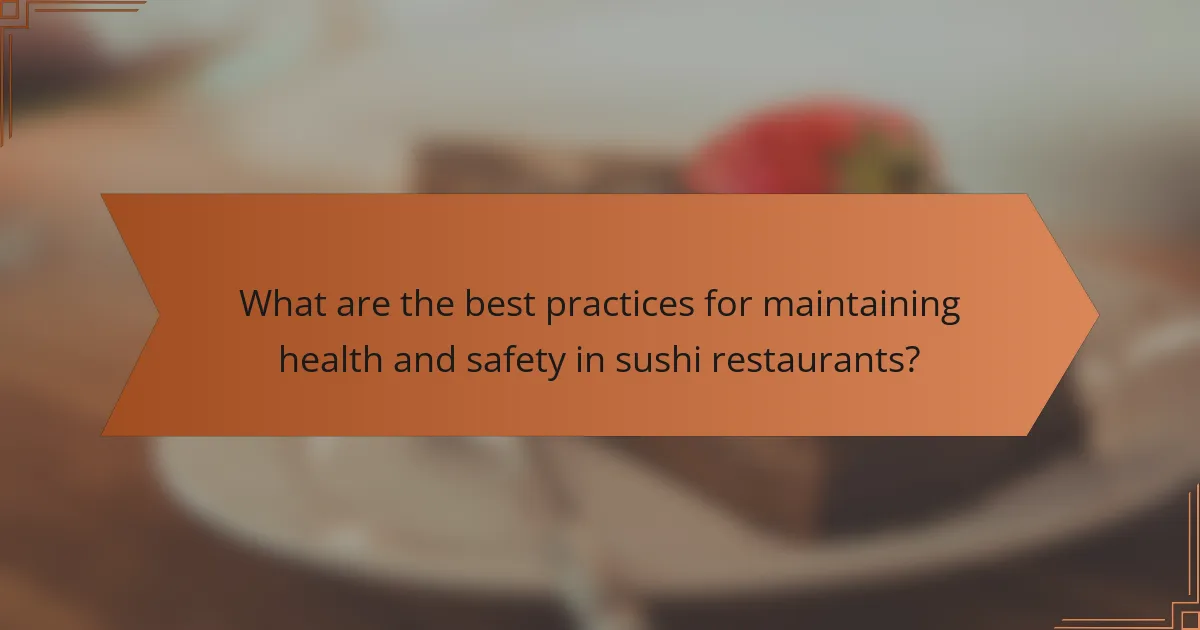
What are the best practices for maintaining health and safety in sushi restaurants?
Best practices for maintaining health and safety in sushi restaurants include proper food handling and storage. Sushi chefs must use fresh, high-quality ingredients. They should store raw fish at temperatures below 41°F to prevent bacterial growth. Regular cleaning and sanitizing of surfaces and utensils are essential. Handwashing stations must be accessible for staff to maintain hygiene. Cross-contamination should be avoided by using separate cutting boards for raw fish and vegetables. Training staff on food safety protocols is crucial. Compliance with local health codes and regulations ensures safe operations. Regular health inspections help maintain standards.
How can sushi restaurants ensure ongoing compliance with regulations?
Sushi restaurants can ensure ongoing compliance with regulations by implementing regular training programs for staff. These programs should cover food safety, hygiene practices, and local health codes. Additionally, establishing a routine for self-inspections can help identify potential compliance issues. Keeping detailed records of food sourcing and handling is essential. Regularly reviewing and updating operational procedures according to the latest regulations is also necessary. Engaging with local health inspectors can provide valuable insights into compliance requirements. Furthermore, obtaining certifications from recognized food safety programs can enhance credibility and ensure adherence to standards.
What regular inspections should be conducted?
Regular inspections should include health inspections, safety inspections, and equipment inspections. Health inspections assess food safety practices and sanitation. They ensure compliance with local health codes. Safety inspections focus on fire safety and emergency procedures. These inspections verify that safety equipment is functional and accessible. Equipment inspections check the condition of kitchen appliances and tools. They ensure that all equipment meets health and safety standards. Regular inspections help maintain a safe dining environment. Compliance with these inspections is mandated by local health authorities.
How can restaurants implement effective training programs?
Restaurants can implement effective training programs by establishing clear objectives and structured content. They should focus on health and safety regulations relevant to their operations. Engaging training methods, such as hands-on practice and interactive sessions, enhance learning retention. Regular assessments can measure employee understanding and compliance. Incorporating feedback from staff can improve training materials and methods. Continuous training updates ensure alignment with changing regulations. According to the California Department of Public Health, regular training can reduce health code violations by up to 30%.
What tips can sushi restaurant owners follow to enhance safety standards?
Sushi restaurant owners can enhance safety standards by implementing strict food handling practices. Regular training for staff on hygiene and food safety is essential. They should ensure that all seafood is sourced from reputable suppliers. Maintaining proper storage temperatures for fish is critical to prevent spoilage. Frequent cleaning and sanitizing of kitchen surfaces and utensils help eliminate contamination risks. Owners must also conduct regular health inspections to comply with local regulations. Documenting all safety procedures can provide accountability and traceability. Following these tips can significantly reduce health risks in sushi restaurants.
How can technology assist in maintaining food safety?
Technology can assist in maintaining food safety through various advanced methods. Digital monitoring systems track temperature and humidity in real-time. These systems alert staff to deviations that could compromise food safety. Automated inventory management reduces the risk of using expired ingredients. Blockchain technology enhances traceability in the supply chain. This allows for quick identification of contaminated products. Mobile applications help staff manage food safety protocols effectively. Sensors can detect contaminants in food products. These technologies collectively ensure compliance with health and safety regulations.
What resources are available for staying updated on regulations?
Government websites provide reliable resources for staying updated on regulations. The California Department of Public Health offers current health and safety guidelines. The Los Angeles County Department of Public Health also posts updates relevant to local regulations. Industry associations, such as the California Restaurant Association, share insights on regulatory changes. Online legal databases can provide access to updated laws and regulations. Subscribing to newsletters from these organizations can ensure timely information. Regularly attending workshops and seminars can also help keep stakeholders informed.
Health and safety regulations in Los Angeles sushi restaurants are governed by the California Retail Food Code, which mandates specific food safety practices to prevent foodborne illnesses. Key aspects include proper fish preparation, refrigeration standards, regular health inspections by the Los Angeles County Department of Public Health, and mandatory food safety training for staff. Non-compliance can result in fines, temporary closures, and potential health risks to consumers. The article also discusses the roles of various health agencies, the importance of customer awareness, and best practices for maintaining safety standards in sushi establishments.
